Crows and ravens are frequently mistaken for one another.
Many people mistake these two birds for each other, which is understandable. Even though they’re a part of the same family, several traits set them apart.
For example, ravens have a larger bill, a wedge-shaped tail, and are larger. In this article, we’ll go over both the similarities and differences between these two birds to help you easily identify who’s who.
On this page
Body & Shape
Common Ravens (Corvus corax) weigh more, have a greater wingspan, and are longer than crows. A ravens bill is also larger; crows have smaller, flat bills and lack a tuft of hair at the top of the bill. Ravens bills are more powerful because they are curved and larger in size. They also have a tuft of hair that sits on top of the bill.
Crows and ravens are both large black birds, but that’s where their similarities end.
Crows, for example, American Crows (Corvus brachyrhynchos), tend to fluff up their feathers into a mane, while ravens fluff up the feathers on its breast, giving them a more ragged look. Another stand-out difference is the wings and tails.
Related: Blackbird vs Crow vs Raven
Raven’s tail is wedge-shaped, and they have pointed wings, but crows have fan-shaped tails and blunt and splayed wings. Both have strong black beaks.
Size
When comparing the raven and crow size, then ravens are larger, measuring around 24 – 27 inches. Due to their size, these corvids weigh more as well.
The average weight is about 40 ounces. Crows are smaller, measuring around 17 inches long. They weigh about 20 ounces. For reference, ravens are almost the size of a Red-tailed Hawk, while crows are almost the size of pigeons.
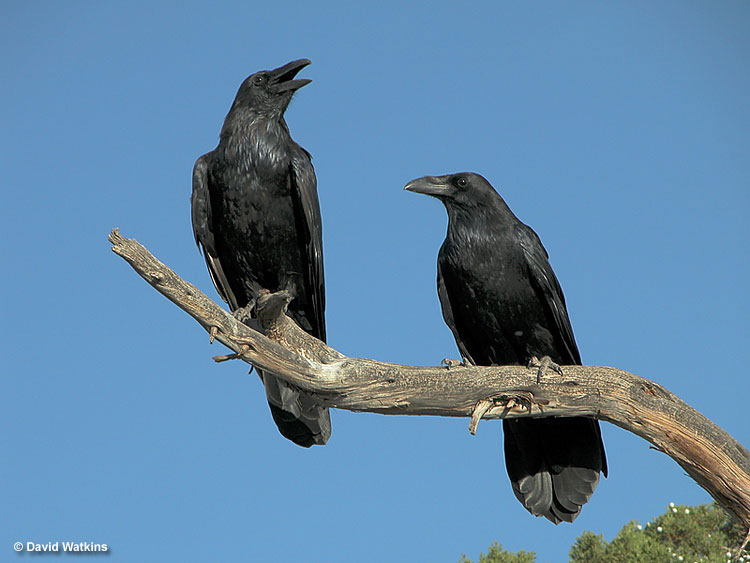
Ravens are larger than crows
Flight
If you spot one of these birds in flight, there are a few ways to differentiate them.
First, a raven’s wingspan is larger than a crows. Ravens have a wingspan of 3.5 – 4 feet, while crows have a wingspan of 2.5 feet. An easy way to identify what you’re seeing is by looking at the tail, crows have fan-shaped tails and ravens have wedge-shaped tails.
Related: What is a group of ravens called?
Additionally, when ravens flap their wings, you’ll hear a distinctive swishing sound. Crow’s are silent. Lastly, crows tend to flap their wings regularly. Ravens flap less because they soar on rising masses of air. If you notice such a bird soaring, gliding with outstretched wings, for more than a couple of seconds, it’s most likely a raven.
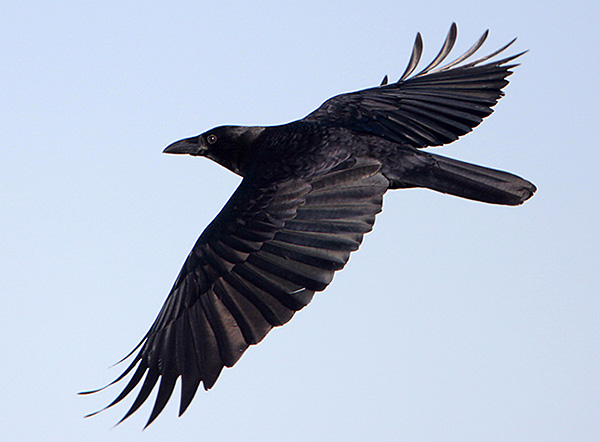
American Crow in Flight – smaller than raven
Age
Ravens have longer lifespans and can live for up to 30 years in the wild. Crows have a much shorter lifespan and only live for around eight years in the wild. However, crows in captivity have been known to live for about 20 years, and ravens in captivity for up to 40 or 50 years. Crazy, right?
Raven vs Crow Behavior
When it comes to body language on raven vs crow, Ravens have the upper hand.
Ravens can communicate with their elongated throat feathers with various displays. When it comes to migration, ravens don’t migrate. They stay and live in their natural homes. On the other hand, there is some migration with group of crows.
Some crows will choose to move, while others will stay home.
Crows are well known for their cawing sound, more specifically, raspy caw. Raven’s call is similar to a croaking sound, but their voice is much deeper.
Are Ravens Smarter Than Crows?
Crows and ravens are intelligent birds, there’s no doubt about that, but which one is smarter?
Some sources claim crows are smarter, while some claim ravens are more intellectual.
Ravens can make tools and use them to solve problems. Crows also show signs of intelligence in their ability to adapt to new environments and solve problems, though not as well as ravens can. However, crows have their talents with their sharp memories and ability to remember human faces.
Crows also show close family bonds, which works in their favor. They roost together in large numbers and have different tasks to help out with new members of the family.
Both are powerful mimickers – they can imitate human sounds and are known even to copy the dog barks.
Diet
Ravens prefer to forage for food in the wild, but they can be seen at garbage dumps picking at scraps for any easy meal. However, a ravens main diet will consist of birds, small mammals, reptiles, amphibians, and carrion from cattle and sheep.
Crows are also known to feed on carrion, but their diet mainly consists of seeds, earthworms, nuts, fruits, mice, small birds, frogs, and even bird eggs. You might be wondering if crows eat other birds, and yes, they can eat other birds. In those cases, crows go for smaller birds, but they can also go for bigger ones.
Read more: What do crows like to eat?
Location
Crows are highly adaptable animals. They’ve come to establish colonies in towns and cities.
Despite being territorial, they are usually not bothered to share their environments with other birds. Ravens tend to avoid highly populated areas with other birds. Instead, they go for isolated habitats and environments.
Crows and ravens are common across North America (including the United States), and they have related species all over the world, including Europe, Asia, and Africa.
Nest
Crows prefer to nest in evergreens but will nest in trees that lose their foliage when evergreens aren’t available. The nest usually sits at the top third or quarter of the tree.
Both crows in a breeding pair will help build the nest. The nest is made mainly of medium-sized twigs, with the inner area lined with weeds, pine needles, animal hair, or soft bark. Nest size can vary.
Ravens create their nests in trees, on structures like billboards, telephone poles, bridges, and on cliffs. Cliff nests usually sit under a rock overhang. Nests tend to be high up in the tree but still below the canopy. They typically sit lower in trees than crow’s nests do.
Male ravens will bring a small number of sticks for the nest, but most of the nest creation is done by the female ravens. Females make the center up with small twigs and branches. The bottom can be lined with everything from sheep’s wool, mud, bark strips, fur, grasses, and even trash.
Eggs (Crow compared to Raven)
Here’s how to identify crow and raven eggs.
Crows
Crows usually hide their nests on a horizontal branch or in a crotch near the trunk of a tree. The nest usually sits at the top third or quarter of the tree.
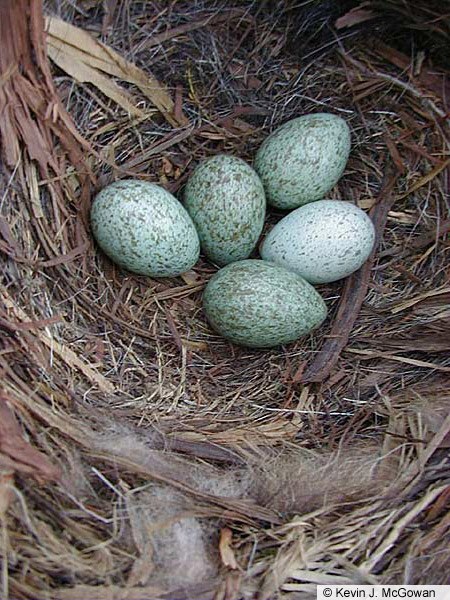
American crow nest and eggs
Both crows in a breeding pair will help build the nest. The nest is made mainly of medium-sized twigs, with the inner area lined with weeds, pine needles, animal hair, or soft bark. Nest size can vary, typically 6 – 19 inches across, 4 – 15 inches deep, and with an inner area that’s about 6 – 14 inches across.
- Clutch size ranges from 3 – 9 eggs
- The incubation period is 16 – 18 days
- The nestling period is 20 – 40 days
- Eggs are either a pale bluish-green or olive green with blotches of brown and gray toward the egg’s larger end.
Ravens
Ravens create their nests in trees, on structures like billboards, telephone poles, bridges, and on cliffs. Cliff nests usually sit under a rock overhang. Nests tend to be high up in the tree but still below the canopy. They typically sit lower in trees than crow’s nests do.
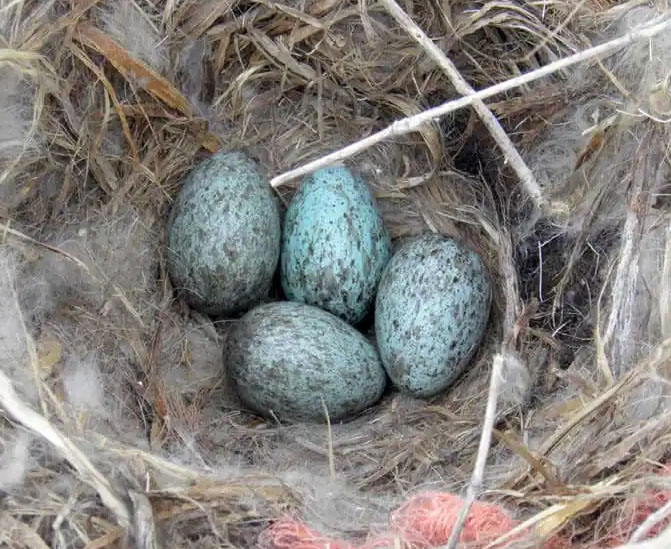
Raven nest and eggs
Male ravens will bring a small number of sticks for the nest, but most of the nest creation is done by the female ravens. Ravens will break off sticks from live plants that are around three feet long to make the base of the nest.
They will even scavenge sticks from old nests. Females then make the center up with small twigs and branches. The bottom can be lined with everything from sheep’s wool, mud, bark strips, fur, grasses, and even trash. It takes around nine days to complete the nest, with the end result usually being an uneven nest that’s two feet high and five feet across.
It’s not uncommon for nests to be reused; however, it may not be by the same birds.
- Clutch size ranges from 3 – 7 eggs
- The incubation period is 20 – 25 days
- The nestling period is 28 – 50 days
- Eggs are either olive, blue, or green. They’re often mottled with olive, purplish brown, or dark green.
Conclusions
Crows and ravens are both large black birds, but that’s where their similarities end.
One is bigger than the other; one is more intelligent than the other; they have different feathers, sound different, have different behaviors, are not closely related, and move differently.
Next time you see a large black bird, remember some of the key differences we shared above, like behavior, movement, and size, to decipher whether you’re looking at a crow or a raven.
Raven vs Crow: FAQ
Are crows and ravens the same?
No, crows and ravens are not the same. They’re similar at a glance, but when you look closer, you’ll see they’re quite different. So even though they’re a part of the same family, several traits set them apart.
What is the difference between a raven and a crow?
Ravens have larger bills, wedge-shaped tails, are larger, and are as big as Red-tailed Hawks. Crows have smaller bills, fan-shaped tails, and are about the size of pigeons.
Which is more aggressive a crow or a raven?
Crows are more aggressive than ravens. Ravens are territorial birds, but they almost never display outward aggression. Crows can often be seen mobbing other animals, including birds; they can sometimes cause severe damage.
Is a raven bigger than a crow?
Yes, ravens are bigger than crows. The majority of ravens are larger than crows, usually by a considerable amount. The smallest ravens are about the same size as the largest crows.
Are crows afraid of ravens?
No, crows are not afraid of ravens. It’s not uncommon to see crows hassling or attacking ravens. We would like to note that this isn’t uncommon amongst birds that are from the same genus. Ravens can easily evade crows if they’re getting injured. However, they usually don’t notice the mobbing behavior. Ravens are almost never aggressive toward crows.

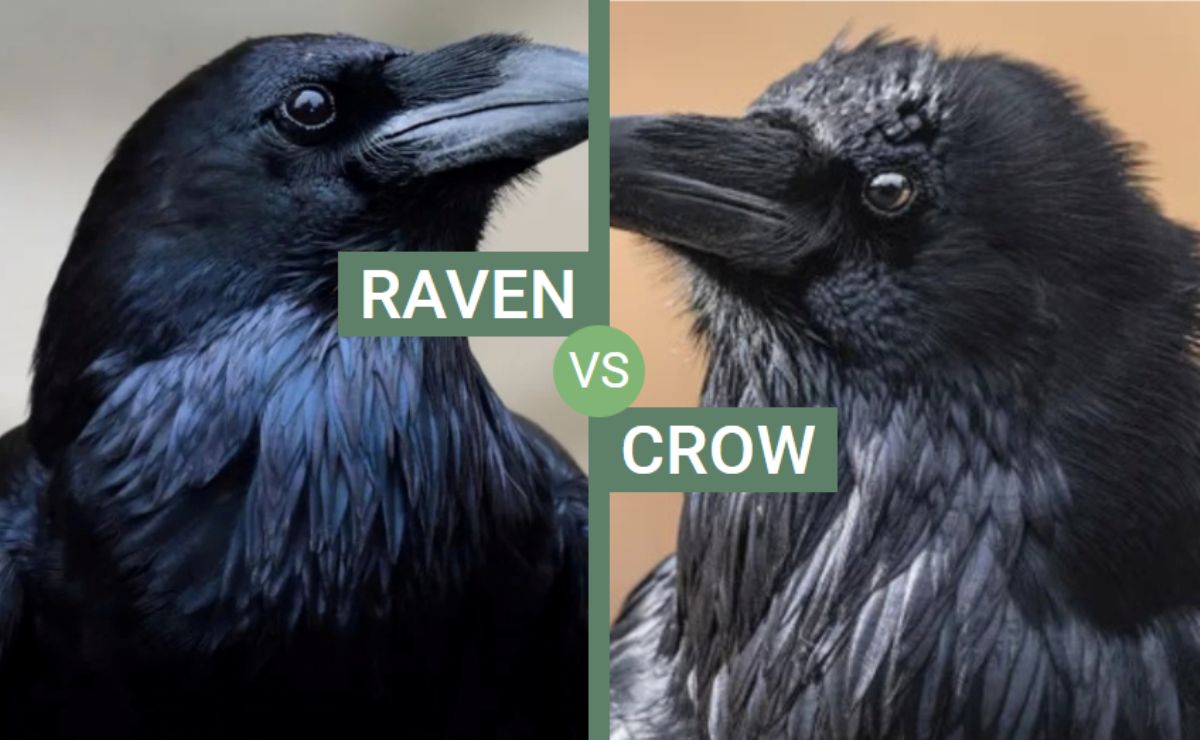
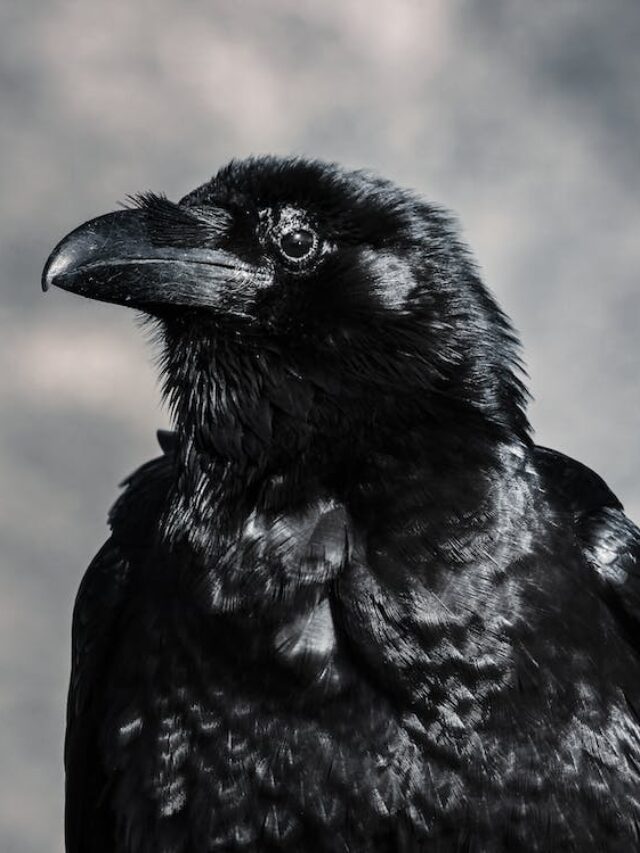

Thomas
Friday 15th of December 2023
I believe I am correct in saying that, after primates, ravens, have the biggest brain to body ratio of all living animals. They are very smart and can solve problems before they complete the task. I believe it was on the program Nova where they displayed a raven Figuring out how to enter a locked cage with food inside that required several steps, and then after they removed a few steps, the raven was able to understand how to skip steps to get to the cage quicker, which was absolutely fascinating
Patrick O'Donnell
Friday 15th of December 2023
@Thomas- Thanks for your comment, Ravens are indeed incredibly smart birds!